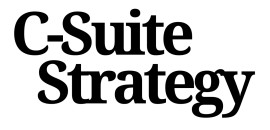
Understanding the strategic value of demand planning software
Why demand planning software matters for business strategy
In today’s volatile markets, aligning demand and supply is more than an operational challenge—it’s a strategic imperative. Effective demand planning software enables leadership teams to anticipate shifts in customer demand, respond to market changes, and optimize inventory management. The right planning software transforms raw data into actionable insights, supporting agile decision-making across the supply chain and sales functions.
For CEOs and c-suite leaders, the strategic value of demand planning lies in its ability to connect sales, supply, and inventory data in real time. This integration empowers organizations to:
- Enhance forecast accuracy and reduce costly stockouts or excess inventory
- Improve customer satisfaction by meeting demand patterns with precision
- Enable collaborative planning between sales, marketing, and supply chain teams
- Support data-driven decisions that drive business growth and profitability
Modern demand planning software leverages machine learning and demand sensing to refine forecasts as new data becomes available. This means organizations can react quickly to changes in customer demand, market trends, and supply disruptions. The result is a more resilient and responsive supply chain, where forecasting and planning are not just back-office functions but central to business strategy.
As you consider the key features that enable agile decision-making and the importance of integrating demand planning with enterprise systems, it’s crucial to recognize how these capabilities support broader financial and strategic goals. For deeper insights into innovative financial approaches that empower today’s c-suite, explore this resource on innovative financial approaches for the c-suite.
Key features that enable agile decision-making
Agility through advanced demand forecasting
For C-suite leaders, the ability to respond quickly to shifting market dynamics is a competitive advantage. Demand planning software must offer advanced demand forecasting capabilities, leveraging real time data and machine learning to detect changes in demand patterns. This enables more accurate demand forecasts, supporting both supply planning and inventory management. By integrating demand sensing and predictive analytics, organizations can anticipate customer demand and align supply chain planning with actual market needs.
Collaboration and visibility for cross-functional teams
Effective demand planning depends on seamless collaboration between sales, marketing, supply chain, and finance teams. Key features should include collaborative planning tools, real time dashboards, and shared access to demand forecasts. This transparency ensures that all stakeholders are working from a single source of truth, reducing silos and improving responsiveness to changes in business or customer requirements. Enhanced visibility into sales and inventory data helps teams make informed decisions faster, minimizing the risk of stockouts or excess inventory.
Scenario planning and what-if analysis
Uncertainty is a constant in business, making scenario planning essential for strategic decision-making. Leading planning software should provide robust what-if analysis tools, allowing executives to model the impact of various market or supply chain disruptions. This empowers leadership to proactively adjust supply, inventory, or sales strategies in response to evolving market conditions. The ability to simulate different demand supply scenarios supports risk management and helps maintain customer satisfaction even during volatility.
Continuous improvement with learning algorithms
Machine learning is transforming demand forecasting by continuously improving forecast accuracy over time. Modern demand planning software should incorporate learning algorithms that adapt to new data, market trends, and customer behaviors. This ongoing refinement supports better inventory management and demand supply alignment, ensuring that forecasts remain relevant as the business evolves.
For a deeper dive into how procurement strategies intersect with demand planning and supply chain agility, explore this robust procurement strategy in the social media industry resource.
Integrating demand planning with enterprise systems
Bridging Demand Planning with Enterprise Ecosystems
For C-suite leaders, integrating demand planning software with broader enterprise systems is no longer optional. It’s a strategic necessity for aligning supply chain, sales, and inventory management with real-time market dynamics. When demand planning tools connect seamlessly with ERP, CRM, and supply chain management platforms, organizations gain a unified view of demand, supply, and customer data. This integration supports faster, more informed decision-making across business units.
- End-to-end visibility: By connecting demand forecasting and supply planning with inventory management and sales marketing systems, executives can monitor demand patterns and inventory levels in real time. This reduces the risk of stockouts or excess inventory, directly impacting customer satisfaction and profitability.
- Data consistency: Integrated planning software ensures that all teams—from sales to supply chain—work from a single source of truth. This eliminates data silos and improves forecast accuracy, enabling more agile responses to shifts in customer demand or market conditions.
- Collaborative planning: When demand planning is embedded within the enterprise ecosystem, cross-functional teams can collaborate more effectively. Sales, product, and supply chain teams can align on demand forecasts and supply planning, reducing miscommunication and improving execution.
Modern demand planning solutions leverage machine learning and demand sensing to process real time data from across the business. This enhances the accuracy of demand forecasts and enables proactive supply chain planning. The result is a more resilient organization, capable of adapting to market volatility and customer needs.
For executives seeking to enhance their strategic vision, executive workshops can be a valuable resource for aligning leadership around integrated planning initiatives.
Data quality and predictive accuracy
Driving Forecast Accuracy with Reliable Data
For executives steering demand planning and supply chain management, data quality is the backbone of effective forecasting. High-quality, real-time data enables planning software to generate accurate demand forecasts, which are crucial for aligning inventory management, sales, and supply planning. Inaccurate or outdated data can quickly erode trust in forecasts, leading to missed opportunities or excess inventory.
- Data integrity: Clean, consistent, and timely data from sales, customer demand, and market sources ensures that demand planning software reflects true demand patterns.
- Predictive accuracy: Advanced forecasting tools leverage machine learning and demand sensing to adapt to changing market conditions, improving forecast accuracy over time.
- Real-time insights: Access to real-time data empowers teams to make agile decisions, respond to demand supply shifts, and optimize inventory levels.
Integrating multiple data sources—such as sales marketing, product launches, and customer feedback—enables collaborative planning across business units. This holistic approach supports better demand forecasting and enhances customer satisfaction by ensuring the right product is available at the right time.
Ultimately, the ability to trust demand forecasts depends on the quality of both the underlying data and the predictive models. Executives should prioritize investments in planning software that supports robust data management and continuous learning, ensuring that demand and supply chain planning remains responsive and resilient in a dynamic market.
User experience and adoption at the executive level
Executive Engagement Drives Demand Planning Success
When evaluating demand planning software for strategic decision-making, user experience at the executive level is a critical factor. C-suite leaders need intuitive dashboards and real-time access to demand, supply, and inventory data. This empowers them to quickly interpret demand forecasts, spot shifts in customer demand, and steer business strategy accordingly.Designing for Decision-Makers
Executives require more than just granular data—they need actionable insights. Planning software should offer:- Clear visualization of demand patterns, sales trends, and supply chain risks
- Customizable reports that highlight key features and forecast accuracy
- Seamless navigation between demand forecasting, inventory management, and supply planning modules
- Real-time alerts for deviations in demand supply balance or market changes
Driving Adoption Across Leadership Teams
Adoption hinges on how well the software integrates with existing executive workflows. Collaborative planning tools that connect sales, marketing, and supply chain teams foster alignment and transparency. Machine learning and demand sensing capabilities should be accessible without steep learning curves, ensuring that leadership can trust and act on the forecasts provided.Building Trust in Forecasts and Data
For executives, confidence in the data is non-negotiable. Planning software must demonstrate robust data quality controls and predictive accuracy. Transparent methodologies—such as how machine learning models generate demand forecasts—help leadership teams validate assumptions and make informed decisions. The ability to drill down from high-level forecasts to real-time, product-level insights supports both strategic and operational management.Linking User Experience to Business Outcomes
Ultimately, a positive executive user experience accelerates adoption and maximizes the value of demand planning investments. When C-suite leaders can easily interpret demand and supply signals, they are better equipped to drive customer satisfaction, optimize inventory, and respond to market changes. This alignment between technology and leadership is essential for effective chain planning and long-term business growth.Measuring ROI and strategic impact
Evaluating the Business Value of Demand Planning Investments
For CEOs and executive teams, measuring the return on investment (ROI) of demand planning software is not just about cost savings. It is about understanding how improved demand forecasting, supply chain planning, and inventory management directly impact business outcomes. The right planning software enables organizations to respond to real time market shifts, optimize inventory, and align sales and supply planning with actual customer demand. These outcomes drive both top-line growth and bottom-line efficiency.
- Forecast accuracy: Enhanced demand forecasting and demand sensing capabilities, often powered by machine learning, reduce forecast errors. This leads to better inventory management and less capital tied up in excess stock.
- Agility and responsiveness: Real time data and collaborative planning features help teams adapt quickly to changing demand patterns, supporting customer satisfaction and minimizing lost sales opportunities.
- Cost efficiency: Improved demand supply alignment lowers costs across the supply chain, from procurement to logistics, by reducing waste and optimizing resources.
- Strategic alignment: Integration with sales, marketing, and product management ensures that demand forecasts inform broader business strategies, supporting growth and market positioning.
Key Metrics for Executive Decision-Making
To truly measure strategic impact, executives should track metrics that reflect both operational improvements and business value. Consider these:
- Forecast accuracy and bias over time
- Inventory turnover and days of supply
- Customer service levels and satisfaction scores
- Reduction in stockouts and excess inventory
- Time to respond to market or customer demand changes
- Collaboration effectiveness across sales, supply chain, and planning teams
Ultimately, the most effective demand planning software delivers more than just process automation. It empowers leadership to make informed, data-driven decisions that enhance competitiveness and resilience in a dynamic market. By continuously monitoring these metrics, executives can ensure that their investment in planning software translates into measurable business value and sustained strategic advantage.














